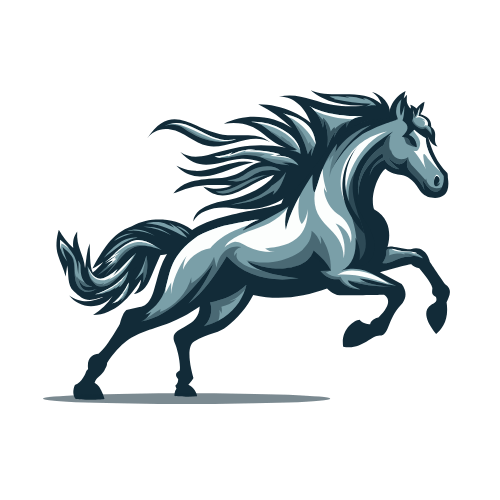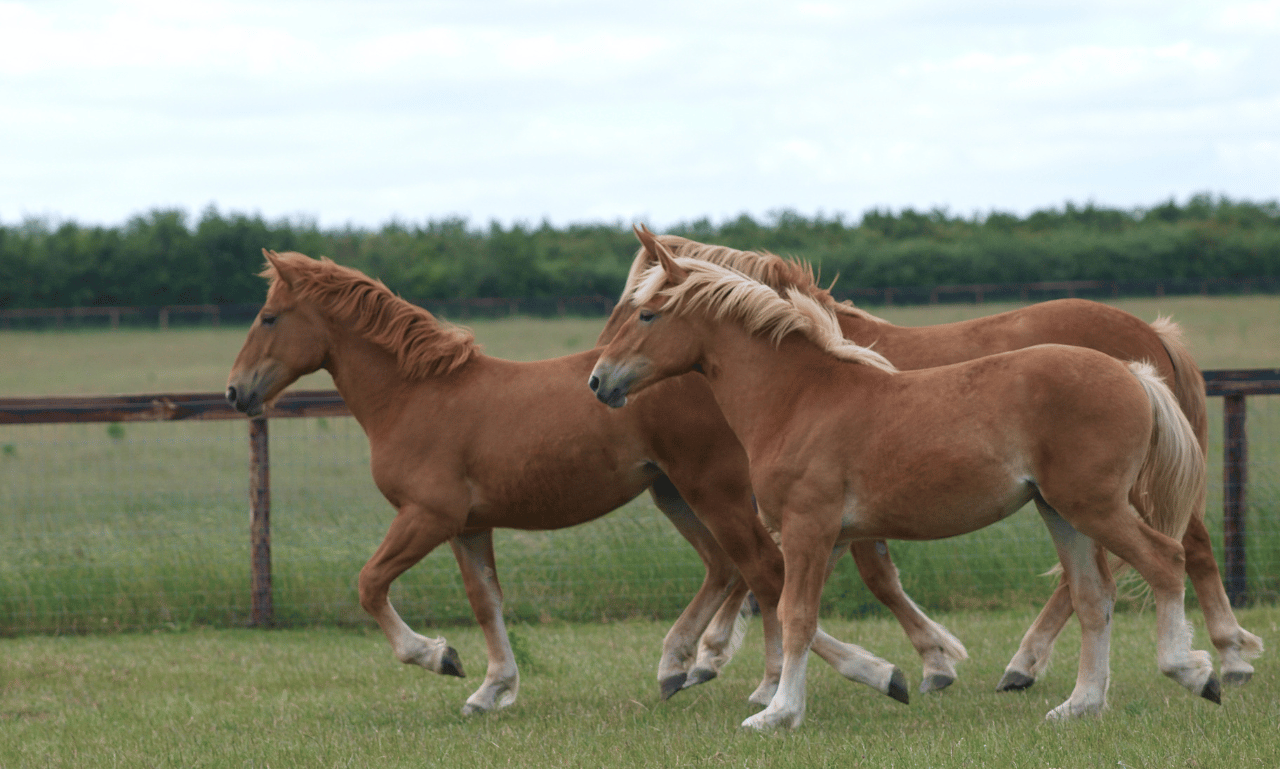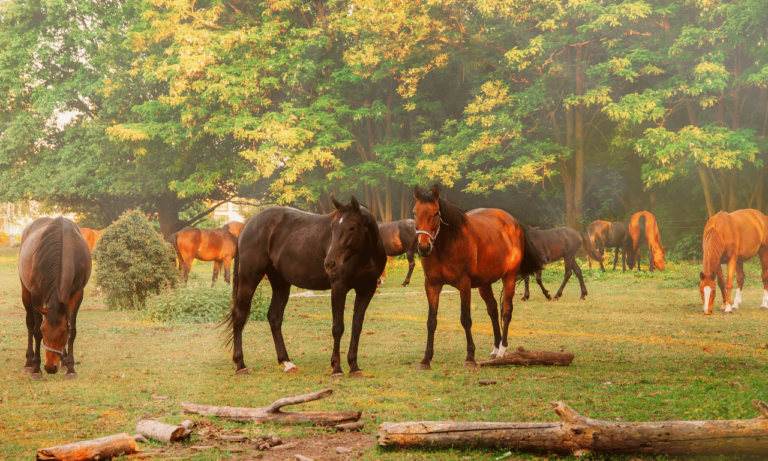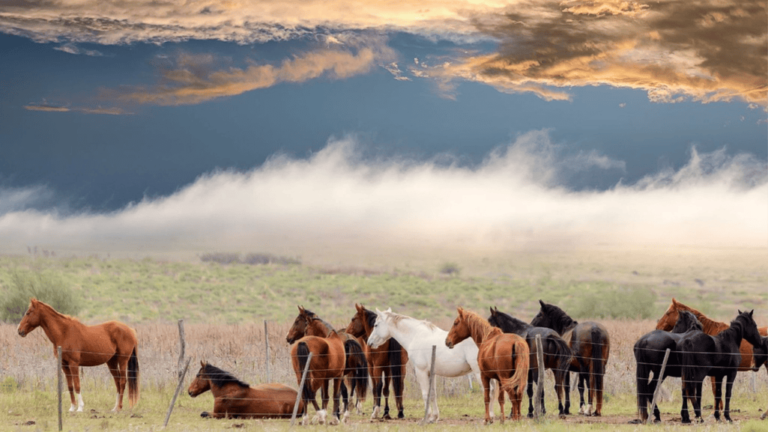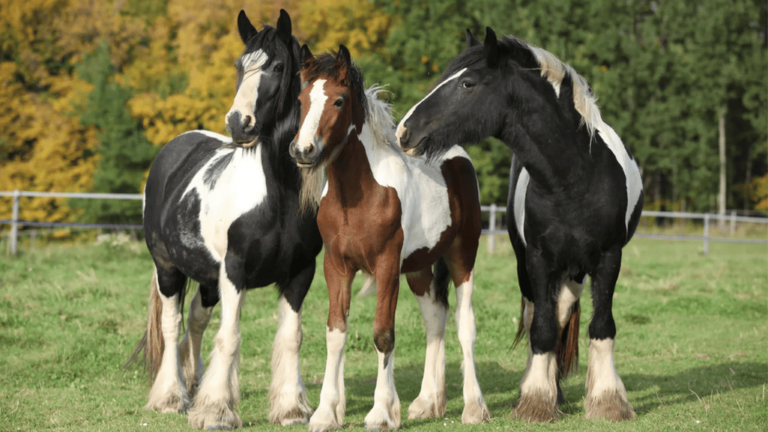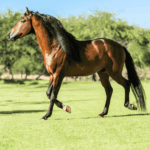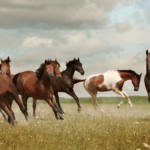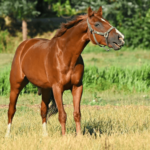Step into the captivating world of rare horse colors. Be mesmerized by the stunning variety of unique equine hues. From the striking patterns of Appaloosas to the elegant shades of Cremellos, these extraordinary horses are true masterpieces of nature.
Their coats are not just mere colors. They are exquisite works of art that showcase the incredible diversity within the equine world.
Embark on a journey to uncover the secrets behind these rare horse colors. We’ll delve into the fascinating genetics that give rise to these breathtaking coats. Learn about the interplay of dominant and recessive genes, and how color modifiers can create an array of stunning variations.
Prepare to be awestruck by the shimmering metallic sheen of Silver Dapples, the golden glow of Champagnes, and the ethereal beauty of Cremellos.
Through engaging and educational content, we celebrate the wonders of the equine world. We shine a spotlight on these rare and remarkable horses. Join us as we explore the allure of uncommon equine coat colors and discover the beauty that lies within each unique shade.
Key Takeaways
- Rare horse colors showcase the incredible diversity within the equine world
- Genetics play a crucial role in determining these unique coat colors
- From striking Appaloosas to elegant Cremellos, each rare color is a masterpiece of nature
- Dominant and recessive genes, along with color modifiers, create stunning variations
- Engaging and educational content celebrates the beauty and wonders of rare horse colors
The Allure of Uncommon Equine Coat Colors
In the world of horses, some stand out with their unique colors. These rare colors are more than just bay, black, and chestnut. They include the Akhal-Teke’s metallic sheen and the Rocky Mountain Horse’s silver dapple coat. These colors are true works of art.
The beauty of rare horse colors is not just in how they look. It’s also in their uniqueness. The Camarillo White Horse, with its white coat and dark eyes, is a rare beauty. The Chocolate Palomino, with its dark coat and flaxen mane, shows the variety of horse colors.
| Rare Horse Color | Distinguishing Features |
|---|---|
| True White | Pure white coat with pink skin and dark eyes |
| Brindle | Striped pattern of dark and light hairs |
| Pearl | Iridescent, metallic sheen on a light coat |
| Silver Dapple | Mixture of white and dark hairs, creating a dappled effect |
| Smoky Cream | Light cream coat with a smoky or sooty appearance |
These colors are not just beautiful. They also show the complex genetics behind them. Each color comes from a unique mix of genes, making them rare and valuable.
“Rare horse colors are like hidden gems in the equine world. They capture our hearts with their beauty and remind us of the incredible diversity found in nature.”
From the Akhal-Teke’s metallic sheen to the Rocky Mountain Horse’s silver dapple, these colors amaze and inspire. They show the wonders of horse genetics and the beauty of nature’s creatures.
Genetics Behind Rare Horse Colors

Horse coat colors show the amazing mix of genetics. From common to rare, each color comes from a mix of genes. This mix includes dominant and recessive genes and color modifiers. Knowing this science helps us see the beauty in horse diversity.
Dominant and Recessive Genes
Dominant and recessive genes are key in horse coat color genetics. Dominant genes, like the gray or cream gene, can change other genes’ effects. This results in colors like dapple gray or palomino. Recessive genes, like the pearl gene, need two copies to show up, making them rarer.
The base coat colors of horses come from two main genes: the Extension (E) and Agouti (A) genes. Chestnut is recessive, while black and bay are dominant. The A gene decides if a horse is bay or black, based on its E genotype.
“Genetic diversity in coat colors ultimately stems from mutations that occur within specific genes. Mutations that change the process of producing melanin can result in variations in coat color.” – Equine Genetics Expert
Color Modifiers and Their Effects
Color modifiers add to the beauty of rare horse colors. Genes like cream, pearl, champagne, and silver dapple mix with base colors. This creates unique and striking colors.
The cream gene, for example, can make colors like buckskin, palomino, and smoky black. The pearl gene, though rare, can make colors like chestnut pearl and black pearl. These colors depend on the horse’s base color and other genes.
| Color Modifier | Effect on Base Color | Example Colors |
|---|---|---|
| Cream Gene | Dilutes red and black pigments | Buckskin, Palomino, Cremello |
| Pearl Gene | Lightens coat color, creates metallic sheen | Chestnut Pearl, Black Pearl, Buckskin Pearl |
| Champagne Gene | Lightens base color, creates golden or chocolate hues | Gold Champagne, Amber Champagne, Classic Champagne |
| Silver Dapple Gene | Dilutes black pigment, creates silver or chocolate hues | Silver Dapple, Silver Bay, Silver Black |
The gray gene makes a horse’s coat lighten over time, turning it white. The dun gene creates primitive markings like dorsal stripes. It’s one of the oldest color mutations in horses and donkeys.
Understanding dominant, recessive genes, and color modifiers reveals the beauty of rare horse colors. As we learn more about equine genetics, we appreciate the diversity and beauty of these amazing creatures.
True White The Rarest of Them All

In the world of horses, true white horses are the rarest and most stunning. They are not like gray horses that turn white with age. True white horses are born with a white coat and pink skin, thanks to a special genetic mutation.
True white horses are very rare in the world of horses. Only a few horses have this striking look. Their skin and hair are white from birth, unlike gray horses that get white with age.
True white horses have an otherworldly beauty that wins the hearts of horse lovers everywhere. Their white coats and pink skin show the amazing variety in horse genetics.
The genetic mutation for their white coat is still a mystery. But it’s different from the genes for other white coat types. This makes true white horses very popular among breeders and horse fans.
| Horse Color | Rarity | Distinguishing Features |
|---|---|---|
| True White | Extremely Rare | Pure white coat and pink skin from birth |
| Gray | Common | Born with colored coat, turns white with age |
| Cremello | Rare | Cream-colored coat, blue eyes, pink skin |
True white horses keep their striking look all their lives. They never get any color in their coat or skin. This makes them stand out and adds to their charm.
The true white color isn’t tied to any specific breed. But it’s more common in some, like the Camarillo White Horse and the American White Horse. These breeds have been bred to keep this rare color alive, so future generations can enjoy their beauty.
Breathtaking Shades From Metallic to Dappled

In the world of horses, few colors shine as brightly as the silver dapple and champagne horses. These colors, from metallic to dappled, show the amazing variety and beauty of rare horse colors.
Silver Dapple: Shimmering Elegance
Silver dapple horses have a glamorous look that grabs everyone’s attention. Their coats shimmer with a dappled effect, from light silvery grey to deep chocolate. The light and dark dapples create a mesmerizing pattern.
Their flaxen or silvery manes and tails add a dramatic flair. This makes them truly stand out.
“The silver dapple gene is a true marvel, transforming a horse’s coat into a work of art. It’s as if each hair is infused with a metallic sheen, catching the light in the most enchanting way.”
The silver dapple coloring comes from a special gene that changes black pigment. This gene dilutes the black coat, creating a striking chocolate brown shade. The dappled pattern adds to the beauty.
Some breeds known for silver dapple horses include:
- Rocky Mountain Horse
- Kentucky Mountain Saddle Horse
- Morgan Horse
- Shetland Pony
Champagne: A Golden Glow
Champagne horses have a rare and captivating color, with a natural metallic glow. Their coats shimmer in gold, bronze, and amber, like the sun’s touch. The champagne gene creates this extraordinary coloring.
| Champagne Shade | Base Coat | Description |
|---|---|---|
| Gold Champagne | Chestnut | A rich, golden hue with a metallic sheen |
| Amber Champagne | Bay | A warm, amber tone with a hint of bronze |
| Sable Champagne | Seal Brown | A deep, chocolaty shade with a subtle glow |
When sunlight hits a champagne horse’s coat, it’s magical. The hair shimmers and dances with beauty. Their light amber eyes and freckled skin make them even more unique.
Champagne horses can be found in various breeds, including:
- American Cream Draft
- Tennessee Walking Horse
- Missouri Fox Trotter
- Quarter Horse
Both silver dapple and champagne horses show the amazing diversity of horse colors. Their metallic sheens and dappled effects capture the hearts of horse lovers everywhere. They remind us of nature’s incredible artistry.
Cream Dilution Palominos, Buckskins, and More

The cream dilution gene brings us some of the most stunning horse colors. It works with different base coat colors to create amazing shades. We see golden palominos, striking buckskins, and ethereal cremellos, all thanks to this gene.
The cream gene is special because it affects colors in a unique way. Horses with one copy show diluted colors from pinkish-red to yellow. Those with two copies have even more diluted colors. This gene loves to play with red pigments, making many beautiful coat colors.
Palomino: The Golden Beauty
Palominos are known for their grace and golden coats. Their color comes from a chestnut base and one cream gene. They have coats from pale yellow to vibrant gold, with a white mane and tail.
The palomino coat color is highly prized and can be found in many horse breeds, including Quarter Horses, Thoroughbreds, and Morgans.
Buckskin: A Striking Contrast
Buckskin horses are mesmerizing, thanks to the cream dilution gene. They have a bay base coat diluted by one cream allele. This creates a golden coat with black accents on mane, tail, and legs. The mix of golden and black is truly striking.
- Buckskins are often mistaken for duns, but the presence of the cream gene sets them apart.
- The buckskin color is found in various breeds, such as the American Quarter Horse, the Paint Horse, and the Mustang.
Cremello: The Ethereal Cream
Cremellos have a unique look, thanks to two cream genes and a chestnut base. They have a pale cream coat, blue eyes, and dark skin. Their double dilution is truly captivating.
| Base Coat | Cream Dilution | Resulting Color |
|---|---|---|
| Chestnut | Single copy (N/Cr) | Palomino |
| Bay | Single copy (N/Cr) | Buckskin |
| Chestnut | Double copy (Cr/Cr) | Cremello |
The cream dilution gene is fascinating in equine genetics. It creates stunning colors like palominos, buckskins, and cremellos. These colors amaze horse lovers and breeders worldwide.
Pinto Patterns: Spots and Patches Galore
Pinto horses are loved by many for their white patches against solid colors. They can be found in many breeds, like Quarter Horses and Thoroughbreds. Each pinto pattern shows off unique white and colored areas.
The main pinto patterns are tobiano and overo. Tobiano horses have white patches that go across the spine and down the legs. Overo horses have white patches that don’t cross the spine and are more scattered.
Within overo, there are frame overo, splashed white overo, and sabino overo. Each has its own look.
Paint horses, known for their pinto patterns, come from Quarter Horses and Thoroughbreds. They are great at many things, like Western riding and show jumping. The American Paint Horse Association (APHA) helps keep the breed alive and well.
| Pinto Pattern | Description |
|---|---|
| Tobiano | White patches cross the spine and extend down the legs |
| Overo | Irregular white patches, rarely crossing the spine |
| Frame Overo | White patches have a “frame” around the body, avoiding the head and legs |
| Splashed White Overo | White patches give the appearance of the horse being “dipped” in white paint |
| Sabino Overo | White patches with irregular edges, often extending up the legs |
There are many other pinto patterns, like the medicine hat. It has a colored “hat” on a mostly white body. Piebald and skewbald describe the colors of the non-white areas.
The beauty of pinto horses lies not only in their striking appearance but also in the unique stories behind each pattern. Every spotted or patched coat is a testament to the complex interplay of genetics and the wonders of nature.
As we learn more about these amazing coat patterns, our love for pinto horses grows. They are truly nature’s art, captivating us with their unique charm.
Rare Horse Colors: Nature’s Masterpieces
The world of horses is filled with many colors. Rare horse colors are especially beautiful. They include tovero, sabino, grulla, and mushroom horses. Each color shows the amazing variety and beauty in horses.
Tovero horses have unique spots from tobiano and overo genes. They are truly works of art. Sabino horses have white flecks and patches on their bodies and faces. This makes them stand out with their base color.
The wonders of horse coat colors also include mushroom horses. They have a soft beige or taupe color. This rare color makes them look ethereal and dreamlike.
In the world of horse colors, the Sorraia breed is special. They have ancient grulla coats with unique stripes and leg markings. These horses remind us of wild beauty and timelessness.
Rare horse colors show the amazing power of nature’s art. They range from bold to subtle. These colors remind us of the endless possibilities in the horse world.
| Rare Horse Color | Distinctive Features |
|---|---|
| Tovero | Unique spotting patterns combining tobiano and overo genes |
| Sabino | Flecks and patches of white on the belly, legs, and face |
| Mushroom | Subtle, muted beige or taupe coat color caused by a rare dilution gene |
| Grulla | Primitive dun coat with distinctive dorsal stripes and leg barring |
Looking at rare horse colors, we see their value. We must protect these genetic wonders. By caring for them, we ensure future generations will be inspired by nature’s beauty.
Roan Variations: A Mix of White and Color
Roan is a captivating coat color pattern found in many horse breeds. It’s an even mix of white and colored hairs throughout the body. This mix creates a stunning visual effect that makes roan horses stand out.
The amount of white hairs in a roan coat can vary a lot. Some horses have a heavy sprinkling of white, while others have just a subtle dusting. The head, legs, mane, and tail usually have fewer white hairs, creating a striking contrast.
Roan horses may appear darker or lighter depending on the season. Their coats can change in intensity from year to year.
Strawberry Roan: A Fruity Delight
The strawberry roan is a striking variation. It happens when the roan pattern is on a chestnut base coat. The mix of red and white hairs gives a warm, pinkish hue like ripe strawberries.
Strawberry roans often have a vibrant, almost glowing appearance. This catches the eye of both equine enthusiasts and casual observers.
Blue Roan: A Smoky Hue
The blue roan is another striking variation. It occurs when the roan pattern is on a black base coat. The mix of black and white hairs gives a smoky, bluish appearance.
Blue roans have a cool, almost silvery quality. This sets them apart from other roan variations and adds to their charm.
True roan is always present at birth and doesn’t lighten with age like gray horses. Roans may develop “corn spots,” solid-colored patches of hair in damaged skin areas. These unique markings add to each roan horse’s character and individuality.
| Roan Variation | Base Coat Color | Appearance |
|---|---|---|
| Strawberry Roan | Chestnut | Pinkish, warm hue |
| Blue Roan | Black | Smoky, bluish appearance |
| Red Roan | Bay | Reddish, coppery tones |
The roan gene is a simple dominant trait. If a horse carries even one copy of the gene, they will display the roan pattern. Homozygous roans, with two copies of the roan gene, will produce 100% roan offspring when bred to any other horse.
Genetic testing, like the DNA test from the University of California, Davis, can identify the roan gene in horses. This gives breeders and owners valuable information about their animals’ coat color potential.
Roan horses have captured the hearts of equine enthusiasts for centuries. Their unique coat patterns and striking appearances make them true living works of art.
Pearl and Champagne: Hidden Gems
In the world of rare horse colors, the pearl and champagne genes create stunning shades. Pearl horses have a soft, shiny coat. This is due to the pearl gene mixing with cream or champagne genes.
This mix turns a bay or chestnut coat into a shimmering color. It’s hard to capture in photos but is amazing in real life.
Pearl horses have mesmerizing amber or light brown eyes. These eyes make them look like they’re from a fairy tale. Their coats glow with a unique metallic shine.
Champagne horses are also enchanting. Their color comes from the champagne gene, which adds a golden or bronze shine. They have light amber eyes and freckled skin, making them stand out.
The pearl gene and champagne gene are nature’s hidden gems, bestowing horses with an ethereal beauty that leaves onlookers breathless.
The beauty of pearl and champagne horses is not just in how they look. It’s also in how rare they are. This makes them very sought after by horse lovers and breeders.
| Brand | Price Range (EUR) |
|---|---|
| Karaat Jewelry | 625 – 2900 |
| All Blues | 330 – 1700 |
| Annie Berner | 252 – 788 |
| Bolou | 2715 – 4054 |
The beauty of pearl and champagne horses shows the amazing genetic diversity in horses. These hidden gems remind us of the wonders nature can create.
Brindle and Chimera: Stripes and Patchworks
In the world of horse coat colors, brindle and chimera are standout patterns. They come from genetic mutations that make horses look like living art.
Brindle: Nature’s Tiger Stripes
Brindle horses have tiger-like stripes that look like they were painted by nature. This rare coat pattern happens when a genetic mutation changes how pigment is spread. This makes each brindle horse unique, with patterns as special as fingerprints.
The brindle pattern is rare in horses but common in dogs and cats. When it shows up in horses, it’s a stunning sight. The stripes add depth and make the horse’s appearance even more striking.
Chimera: A Fusion of Colors
Chimera horses are like living canvases, with two sets of DNA creating a mix of colors and patterns. They might have one side chestnut and the other bay. This rare genetic anomaly makes them look like they’re made of different parts.
Chimera horses can also have eyes of different colors. This adds to their striking and unusual look. They show the incredible diversity and beauty in the equine world.
“Brindle and chimera horses are not just rare; they are living art. Each one is a unique masterpiece, created by the magic of genetics and the wonder of nature.” – Dr. Amelia Hartwell, Equine Geneticist
The world of horse coat colors is vast and fascinating. Each pattern and shade tells a story of genetics and chance. Brindle and chimera horses are two of the most captivating examples of nature’s creativity. They remind us of the incredible diversity and beauty in the equine world.
Conclusion
Rare equine coat colors, like Champagne and True Whites, are true wonders. They capture the hearts of horse lovers everywhere. The variety of horse colors shows the amazing complexity of equine genetics.
Exploring horse color genetics helps us appreciate the beauty and rarity of each coat. Colors like pearl and brindle show the incredible range in horses. They win the hearts of many.
Whether you love horses or just admire them, learning about rare colors is exciting. It’s a journey into nature’s colorful world. We are amazed by the beauty and diversity of horses, showing us nature’s endless wonders.
FAQ
What is the rarest horse color in the world?
How do genes determine a horse’s coat color?
What makes Silver Dapple horses so unique?
How does the cream gene affect horse coat colors?
What is unique about the coat patterns of pinto horses?
What causes the roan coat pattern in horses?
How do pearl and champagne genes affect horse coat colors?
What causes the striking appearance of brindle and chimera horses?
